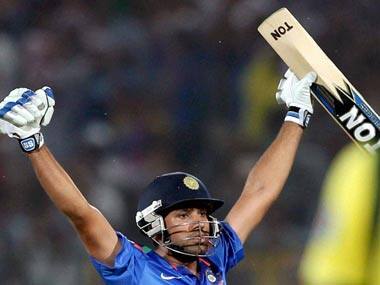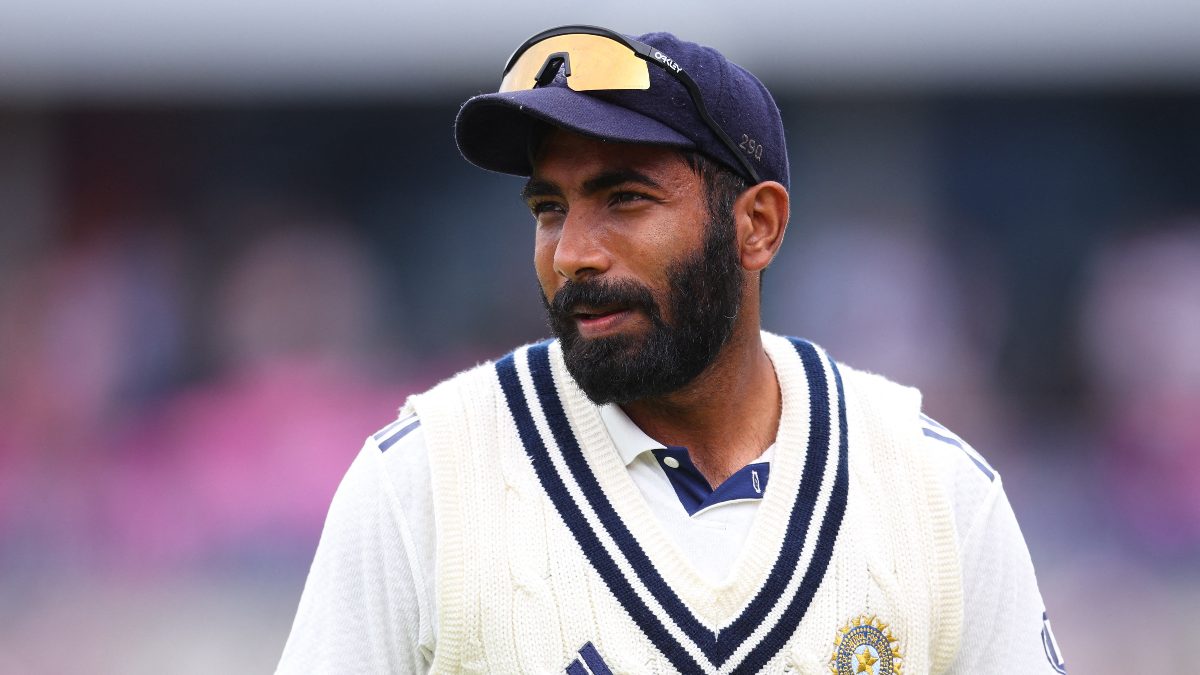Dare we dream? India’s chase of 360 in Jaipur last night was littered with records but, maybe in time, we will come to remember this game as the making of Rohit Sharma. For far too long the knock on Rohit has been terribly talented but capricious. He would charm you with the ease and timing of his cover drive one moment, then drive you to pull your hair out with an injudicious swipe the next. Last night was different. Last night India needed someone to be the spine of their chase; someone who would bat with urgency but still remain unhurried; someone who would allow others to go after the bowlers while still making sure to soak up some of the pressure to score runs. [caption id=“attachment_1177445” align=“alignleft” width=“380”]  Against Australia Rohit was content to play the smart shots. PTI[/caption] That man turned out to be Rohit Sharma. His 123-ball 141 is not only his highest score in international cricket, it was also the most time he has spent at the crease in an ODI, which might be more valuable in the final analysis. Rohit’s ability to get himself out has kept his talent from turning into the results everyone expects from him. It is something he admitted, but defended, after the game, saying, “I completely agree that I have played some stupid shots [in the past] to get out. That’s my natural game. I would like to play my shots.” Against Australia this time though, Rohit was content to play the smart shots. He beat Shikhar Dhawan to the half-century mark, but was happy to sit back and let Dhawan punish the Australian bowlers after that (Dhawan got to 90 while Rohit was still in his 60s). Rohit took the same approach with Virat Kohli, who broke the record for the fastest ODI hundred by an Indian, showing the common sense and restraint not to try and keep up with him, but still scoring at a brisk clip himself. Rohit was even literally felled by cramp, falling to the ground in the 31st over. It did not cause him to lose his composure or attempt to play rash shots in an effort to score faster. He simply re-hydrated and batted on as before, making it seem as if India were chasing 260 and not 360. The high point of his innings was the three fours in four balls he struck off Mitchell Johnson in the 40th over. Australia captain George Bailey was desperately rolling the dice looking for a breakthrough and Johnson had terrorised the Indian batsmen in the first game. But there was to be no second act. Johnson was marginally outside off with the yorker and Rohit bent his front leg, opened the face and guided it past point at speed. That took him to 115, his highest ODI score. After a slower ball, Johnson hurled the next one in at 146 kph, but this too was wide and Rohit carved it over cover. The final ball of the over was a low full toss that Rohit met with the full face of the bat. The ball darted back from whence it came like a rabbit chased by a pack of wolves. Duncan Fletcher’s decision to promote Rohit to open the innings appears to have been the catalyst for the change in his batting. Rohit has shown an appetite for responsibility in the past, and is doing so again as an opener, adapting his game to meet its demands. In this he resembles a former Indian opener. Here are some basic statistics from two players, A and B at a point just after both had scored their third ODI hundred. Player A: 99 innings, 34.26 average, 3 hundreds, 77.14 strike-rate, 18 fifties. Player B: 90 innings, 35.94 average, 3 hundreds, 79.35 strike-rate, 21 fifties. Player A is Rohit Sharma. Player B is Sachin Tendulkar. The similarities don’t end there. Tendulkar before he began to open: 66 innings, 30.84 average, 0 hundreds, 13 fifties, 74.36 strike-rate. Rohit before he began to open: 81 innings, 30.43 average, 2 hundreds, 12 fifties, 77.93 strike-rate. Opening the innings was the making of Tendulkar in one-day cricket. There is every indication that it is now doing the same for Rohit. In the 21 innings since Fletcher promoted him, Rohit has averaged 44 compared to an average of 30.83 before that. Tendulkar averaged 30.84 before he began to open the innings. He averaged 48.29 as an opener thereafter. In limited overs cricket, you want your best players to face the most deliveries. When Virat Kohli, who has a case to make for himself, calls Rohit “the best of the young lot that we have,” it is no small compliment. It is the blessing and the burden Rohit has been carrying since making his ODI debut back in June 2007. Tendulkar was freed by being pushed up the order. Opening the innings has not had the same immediate impact on Rohit as it did on Tendulkar, but it is starting to change him. Perhaps in time India will come to look back on Jaipur 2013 in the same way they look back at Auckland 1994; the moment when a superb talent began to flower in one-day cricket.
In time, India may come to look back on Jaipur 2013 in the same way they look back at Auckland 1994; the moment when a superb talent began to flower in one-day cricket.
Advertisement
End of Article
Written by Tariq Engineer
Tariq Engineer is a sports tragic who willingly forgoes sleep for the pleasure of watching live events around the globe on television. His dream is to attend all four tennis Grand Slams and all four golf Grand Slams in the same year, though he is prepared to settle for Wimbledon and the Masters. see more


)

)
)
)
)
)
)
)
)



